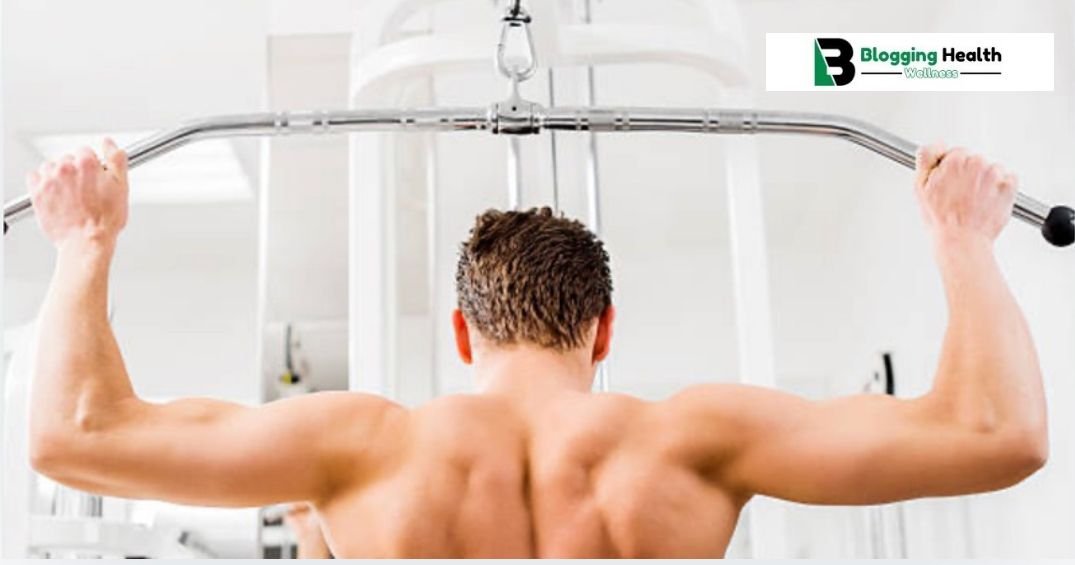The triceps are large muscles which also help form the shape of the upper arm. To work out this particular muscle, the cable rope overhead triceps extension is perhaps among the best exercises. Regardless of your level of strength training, be it beginner or advanced, using this particular movement in your workout will enable you to have stronger and more shaped arms. In this article, we will look at this exercise, starting with the muscles that are worked, how to do the exercise and how to enhance the exercise in order to get optimal benefits.
Introduction to the Triceps
The triceps brachii, commonly referred to as the triceps, is a large muscle located at the back of the upper arm. It consists of three heads:
- Long head: Runs along the upper arm and is attached to the shoulder blade.
- Lateral head: Located on the outer side of the arm, giving the arm a more defined look.
- Medial head: Found beneath the long and lateral heads, closest to the elbow.
The elbow extension is provided by these three heads that together work in pushing activities which include the bench press and the overhead press. One muscle group which a lot of people tend to ignore, as more attention tends to be directed to the biceps, are the triceps. Nevertheless, they are essential for the complete look and functionality of the arm.
What is the Cable Rope Overhead Triceps Extension?
The cable rope overhead triceps extension is an isolation exercise that is intended to strengthen the triceps muscles, especially the long head. It involves grasping a rope attached to a cable machine that is pulled upwards, in this case, above the head against the weighted cable system.
The effectiveness of this exercising movement is quite impressive for the reason that:
There is consistent tension on the triceps throughout the entire movement cycle of the exercise.
The three heads of the triceps are all in action, although the long head takes prominence.
This position of the arms enables the triceps to be in a stretched position which increases the amount of muscle that is recruited.
Muscles Worked in the Cable Rope Overhead Triceps Extension
The primary muscle worked in the cable rope overhead triceps extension is the triceps brachii. However, other muscles play a supporting role to stabilize your body and ensure smooth movement. Here’s a breakdown of the muscles involved:

Primary Muscle:
- Triceps brachii: This is the target muscle. The exercise primarily engages the long head but also activates the lateral and medial heads.
Secondary Muscles:
- Core muscles: The core stabilizes your torso while performing the exercise, especially when standing. It helps maintain balance and prevents excessive arching of the lower back.
- Shoulder stabilizers: The muscles around the shoulders, including the rotator cuff and deltoids, work to maintain proper arm position and prevent injury.
How to Perform the Cable Rope Overhead Triceps Extension
Equipment Needed:
- A cable machine
- Rope attachment
Step-by-Step Instructions:
- Setup:
- Attach a rope to the low pulley of a cable machine. Set the weight to a manageable load, as good form is crucial for this exercise.
- Hold the rope with a neutral grip (palms facing each other) and step forward to create tension in the cable. Lift the rope overhead by extending your arms fully, keeping your elbows close to your head.
- Starting Position:
- With your arms overhead and elbows bent, the rope should be behind your head.
- Keep your core engaged and your back straight. Your elbows should point forward, not flaring out to the sides.
- Execution:
- Exhale as you extend your arms by straightening your elbows.
- Keep the motion controlled and avoid locking your elbows at the top of the lift.
- Inhale as you slowly bend your elbows and return to the starting position, lowering the rope behind your head.
- Repetition:
- Complete the desired number of repetitions, typically between 8-15 reps per set for hypertrophy (muscle growth).
Tips:
- Keep your elbows as still as possible.
- Maintain a neutral spine to avoid putting unnecessary pressure on your lower back.
- Don’t let the rope swing or lose tension—control the weight throughout the exercise.
Benefits of the Cable Rope Overhead Triceps Extension
Incorporating the cable rope overhead triceps extension into your workout routine can offer several benefits:

1. Enhanced Triceps Activation:
The overhead position puts a greater stretch on the long head of the triceps, leading to improved muscle activation. This helps in building a fuller and more defined arm.
2. Improved Upper Body Strength:
Stronger triceps contribute to better performance in various compound lifts such as the bench press, shoulder press, and push-ups. By isolating the triceps, you can increase your pushing power and endurance.
3. Constant Tension:
Using a cable machine ensures that the triceps remain under tension throughout the movement. Unlike free weights, where the tension can reduce at certain points, the cable ensures a continuous load on the muscle.
Common Mistakes to Avoid
Like any exercise, improper form can reduce effectiveness and increase the risk of injury. Here are some common mistakes to watch out for when performing the cable rope overhead triceps extension:

1. Flaring the Elbows:
One of the most common errors is allowing the elbows to flare out to the sides. This reduces the tension on the triceps and puts unnecessary strain on the shoulders.
2. Using Too Much Weight:
Lifting too heavy can compromise your form, causing you to use momentum rather than muscle strength. Start with a moderate weight that allows you to perform the exercise with proper control and range of motion.
Variations of the Cable Rope Overhead Triceps Extension
1. Single-Arm Cable Overhead Triceps Extension:
This variation allows you to work each arm independently, helping to address muscle imbalances. Use a single handle attachment and perform the movement one arm at a time.
Programming the Cable Rope Overhead Triceps Extension into Your Workout
To get the most out of the cable rope overhead triceps extension, it’s important to know how to integrate it into your routine. Here are some tips:
1. As Part of a Triceps-Focused Workout:
Perform the exercise after heavier compound lifts like the bench press or shoulder press. This ensures that your triceps are pre-fatigued and can be fully targeted with isolation exercises.
2. As an Accessory Movement:
Use the cable rope overhead triceps extension as an accessory exercise on upper body or push days. It complements pressing movements and helps build overall arm strength.
Conclusion
The cable rope overhead triceps extension is an excellent exercise for building stronger, more defined triceps. By incorporating it into your workout routine, you’ll not only improve the appearance of your arms but also enhance your overall upper body strength. Focus on proper form, controlled movement, and progressive overload to make the most of this exercise. With consistency and the right approach, you’ll see significant improvements in your triceps development.
Frequently Asked Questions
Is the cable rope overhead triceps extension suitable for beginners?
Certainly, this exercise is safe for beginners but light weights should be used initially while maintaining proper form.
- How does the overhead triceps extension differ from the standard triceps extension?
This exercise engages the long head of the triceps muscle more effectively as it extends from a completely stretched position. Standard extensions emphasize lateral and medial heads more.
- How frequently should this exercise be performed?
Add it to your current routine 1-2 times per week, relative to the split of your workout program.
- Should this exercise be done standing or seated for maximal effect?
Both the standing variation and seated variation can both achieve good results. The standing position requires greater core engagement while the seated position allows more concentration of triceps use.


